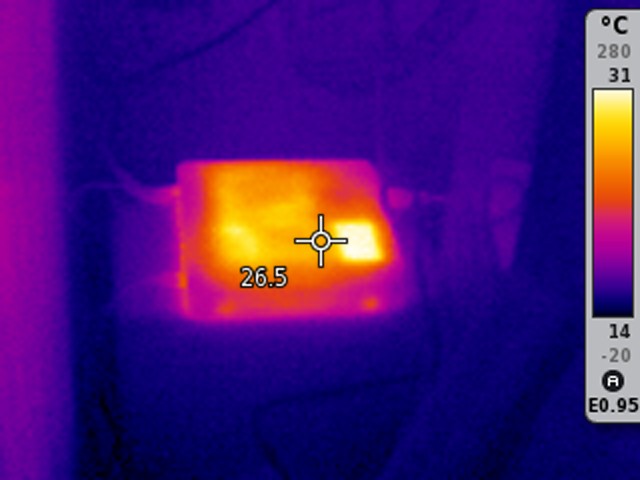Power over Ethernet and Thermal Imaging
I recently installed network devices fed with power over ethernet, and wondered how much heat was dissipated in the ethernet cables.
This can be measured & calculated, our you try to feel if the cables are getting warm.
I'm lucky to have a thermal imaging camera, so I can just "look" at the wires and network devices, and see if anything gets hot.
I've owned this camera for many years now, and have used it for various purposes. For example, whenever I made changes to an electrical installation, I would take before and after shots, to determine if changes had been induced in the heat dissipation.
Thermal imaging cameras are expensive, so they are rarely used to visualize heat in domestic computers, servers, network equipment, cables, ...
However, I did some googling, and discovered that there are now thermal imaging cameras on the market for a couple of $100. Standalone cameras or cameras you connect to your smartphone. Back when I bought mine, you couldn't find one under $1000.
These cheap cameras are probably using low quality sensors, and their measurments might not be very precise, however I'm sure they are good enough to visualize differences in temperature.
Here you can see an access point powered via PoE. The ethernet cable is at the top, and is hard to distinguish from the background, except close to the access point. This means that the cable is not hotter than its environment, except close to the access point: that's heat conducting from the access point itself.
And here you see the PoE switch itself:
The cables are not hotter than the environment.
And one component inside the switch stands out: this must be the power suply.
Didier Stevens
Senior handler
Microsoft MVP
blog.DidierStevens.com




Comments